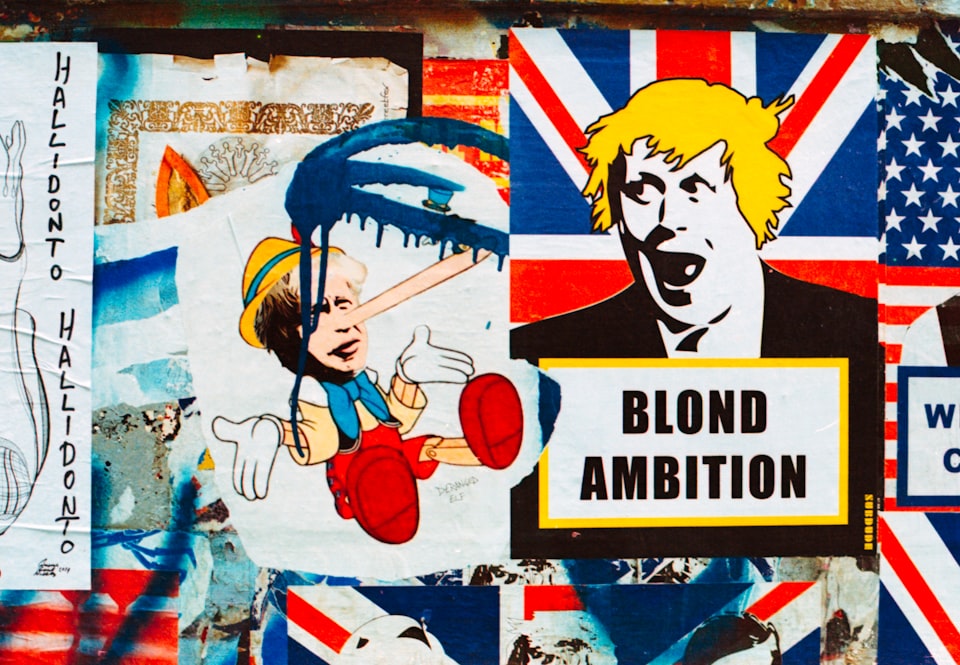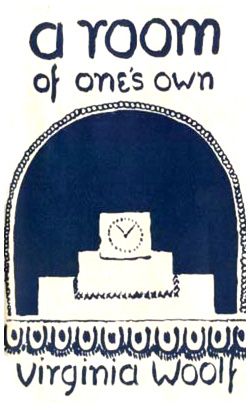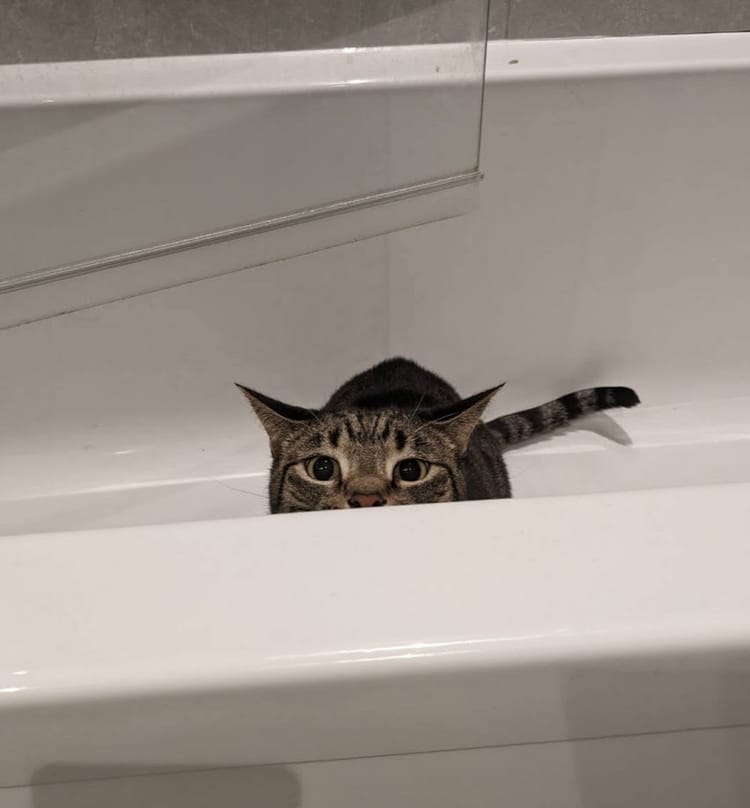Bye Boris

Hello loves :)
Greetings from a sunny London, looking even sunnier this morning now that we've finally begun ridding ourselves of the conniving scarecrow who's been playing at being our prime minister.
Here are five other things that made my week!
1. A Room of One's Own... and £500

Virginia Woolf famously once said that if a woman wants to write fiction, she must have a room of her own with a lock on the door, representing a space where she can be free of domestic responsibilities so she can focus on her work. A lot of people were forcibly reminded of this back in the Covid lockdowns, discovering that it's impossible to do meaningful work while a toddler is trying to show you a fascinating rock they just found in the garden or a teenager urgently needs to know where you put their "unscratchy" t-shirt.
My buddy Charne likes to remind people of the rest of Woolf's prescription: that women need the room, but also money. In her 1929 estimate, about £500 a year (the equivalent of £26,870 today). The truth is, getting good at something takes many, many years of practice, and all artists have to find a way to fund that time, because the chances of someone else funding it are... slim.
I've written before about my own challenges trying to figure out how to fund a full-time creative career, and it's a question that I've returned to recently, because living in London isn't cheap (who knew??). I've been finding a helpful resource in Mark McGuinness's Motivation for Creative People, who talks about the five creative career models he sees amongst professional artists:
- Lucrative Art - getting paid to produce works of art or entertainment (e.g. being a paid screenwriter).
- Commercial Creativity - getting paid to produce creative work that solves practical/business problems (e.g. being a copywriter for an ad agency).
- Day Job - taking a job to pay the bills, and using it to fund your (unrelated) creative work (e.g. T. S. Eliot's job working in a bank).
- Symbiotic Creativity - working in two creative fields that complement each other, one of which may pay better than the other (e.g. being a lawyer who also writes novels about lawyers à la John Grisham; or being an editor and a novelist).
- Creative Entrepreneurship - using your creativity to grow a thriving business.
There are pros and cons to each model, of course, and a million ways to blend them. But having a framework to think through your options can be helpful. If you're a creative person trying to figure out how to find more time to make your art, give Mark's book a try.
2. "Look for a way of life"
On a related note, I love this letter by Hunter S. Thompson about not squeezing yourself into a pre-defined identity.
"I don’t mean that we can’t BE firemen, bankers, or doctors — but that we must make the goal conform to the individual, rather than make the individual conform to the goal. In every man, heredity and environment have combined to produce a creature of certain abilities and desires — including a deeply ingrained need to function in such a way that his life will be MEANINGFUL. A man has to BE something; he has to matter ... But beware of looking for goals: look for a way of life. Decide how you want to live and then see what you can do to make a living WITHIN that way of life."
3. Outline

I've been half-loving and half-infuriated by Outline by Rachel Cusk. It's an experimental novel about a woman going to Athens to teach a creative writing class over the summer. But the narrator is curiously erased; she tells you almost nothing about herself. Instead, you're treated to the witty ramblings and observations of everyone she interacts with. Only gradually do you start to get a sense of who the narrator is, and why she's drawing your attention to these specific characters, these observations. It's like you start to get a portrait of someone made out of what she notices.
It's an interesting experiment. I think I'd dismiss it as being a bit of a literary wank were it not for the fact that the side-characters are so well-drawn, and their insights so poignant.
"It was impossible, I said in response to his question, to give the reasons why the marriage had ended: among other things a marriage is a system of belief, a story, and though it manifests itself in things that are real enough, the impulse that drives it is ultimately mysterious. What was real, in the end, was the loss of the house, which had become the geographical location for things that had gone absent and which represented, I supposed, the hope that they might one day return. To move from the house was to declare, in a way, that we had stopped waiting; we could no longer be found at the usual number, the usual address."
4. The Break
I recently discovered this poem by Lavinia Greenlaw that ripped a hole right through me.

The full text is here if you're using a screenreader <3
I found this in The Forward Book of Poetry 2020, which was a hell of a year for breaking.
5. What writing a novel looks like
I was able to spend most of this week working on the first proper draft of my new novel, literally my favourite activity.
I've now written two and a half novels (one of which no-one will ever, ever see; the other the one that's coming out next year EEEEEE) and my process looks something like this:
- Let the idea bounce around in my head for a while until I must write it.
- Write out the basic idea on a single piece of paper. This gets stuck up above my desk as a reminder.
- Write a "zero draft". It's like a first draft except that it's allowed to be really, really bad. I don't really plan the zero draft. It's like spelunking in the dark, exploring the cave system of my unconscious. Plenty of dead ends and bats and strange moulds in there. The point of the zero draft is to figure out who the characters are, and fundamentally what the story is. There's no rewriting, no fixing things as I go, main characters vanish halfway through if I feel they're not working, new ones appear, suddenly the whole thing's set in space, some chapters are just notes... there are no rules in a zero draft!
- I put that hot mess down for 4-6 weeks, then start writing a proper first draft. My first drafts are fairly organised, and usually start off with a detailed outline (to the surprise of no-one, I'm sure, there is a spreadsheet). Once I've got an outline, I set myself a daily word goal (currently 2,000 words a day, it was 1,300/day when I still had a dayjob and was writing early in the morning) and work my way through beginning to end. The goal of the first draft is roughly to get the skeleton in place.
- Draft two is mostly about character, making sure motivations track and characters make decisions that feel right for them. This can necessitate huge plot changes. This is the draft I usually carefully send out to a couple of trusted beta readers.
- Draft three is mostly about implementing feedback from the beta readers, filling in big plotholes, stripping out threads that aren't working. This is also about where I start thinking about style, pausing to write more descriptive paragraphs and flesh out settings where needed.
- Draft four is where I break open my Strunk & White and start polishing the prose, fixing the grammar, trimming the fat. This timeless essay on "thought" verbs by Chuck Palahniuk also gets consulted a lot.
And then I write more drafts until someone takes it away from me or I can't stand to look at it any more.

On Monday, I started the proper first draft of Snarltooth, which means I printed out the draft zero manuscript, and tried to read it like a reader, mostly noting where I'm bored, where I'm intrigued, and where I have no idea what the heck's happening (which is most of the time... zero drafts are a mess!).
Then I summarise every chapter of draft zero in a spreadsheet:

Then I make a new tab in the spreadsheet and work out a detailed outline of each chapter of the first draft (which will likely be revised 100 times over the next few months).
Now, theoretically, all I need to do is... uh... write all those scenes. Easy! (lol)
--
Wishing you a room of your own and £26,870 a year,
Sam






Member discussion